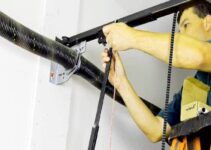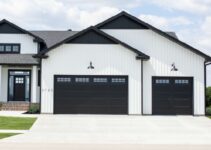When it comes to safeguarding your home against the elements, one often overlooked aspect is the garage door.
A waterproof garage door is a crucial component of any home, especially if you reside in an area prone to heavy rain, flooding, or extreme weather conditions.
In this article I will provide information regarding waterproof garage doors, discussing their importance, types, selection criteria, installation process, and important maintenance tips to ensure your garage remains dry and safe.
What Are Waterproof Garage Doors?
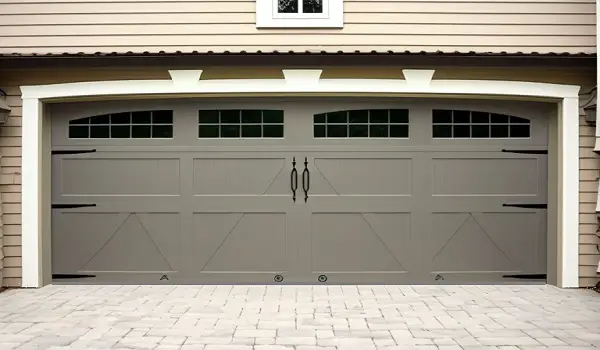
Waterproof garage doors, also known as weatherproof or flood-resistant garage doors, are designed to prevent water infiltration into your garage.
They are constructed using materials and technologies that create a barrier against moisture, rain, snow, and other environmental factors.
These doors are not only about keeping your garage dry but also about safeguarding the valuable items you store inside and protecting your home’s structural integrity.
Why Do You Need a Waterproof Garage Door?
1. Protection Against Flooding
If you live in an area prone to flooding, a waterproof garage door is a must-have.
Heavy rains, storm surges, or melting snow can lead to water seeping into your garage, causing damage to your possessions and potentially compromising your home’s foundation.
A waterproof garage door acts as a formidable defense against such threats.
2. Shielding Against Heavy Rain
Even if you’re not in a flood-prone region, heavy rainfall can still pose a significant risk to your garage.
Water entering through the garage can lead to mold growth, rust, and damage to your vehicles or belongings. A waterproof garage door effectively prevents this scenario.
3. Ideal for Coastal Areas
Coastal areas often face harsh weather conditions, including saltwater corrosion. Waterproof garage doors with corrosion-resistant materials are tailored to withstand these challenges, ensuring the longevity of your garage door.
4. Protection from Snow and Ice
In regions with cold winters, snow and ice accumulation can cause damage to your garage door, compromising its functionality.
Waterproof garage doors with adequate insulation help maintain the door’s performance and integrity even in freezing conditions.
Read Also: Modern Garage Doors
Types of Waterproof Garage Doors
When it comes to waterproof garage doors, you have several options to consider:
Garage Doors with Watertight Seals
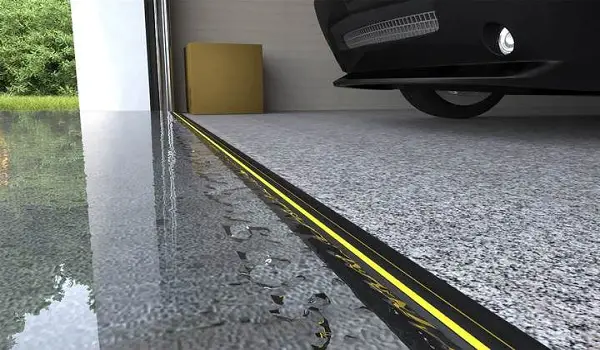
Waterproof Garage Doors: Watertight seals are your first line of defense against water infiltration. These specialized garage doors are meticulously engineered to create a hermetic seal around all edges, ensuring that not a drop of water can penetrate into your garage.
They achieve this through a combination of weatherstripping, gaskets, and seals, creating an impenetrable barrier.
Garage doors with watertight seals are particularly effective in areas prone to heavy rain or potential flooding. The tight seal they provide offers peace of mind, protecting both your belongings and the structural integrity of your home.
Garage Doors with Weatherstripping
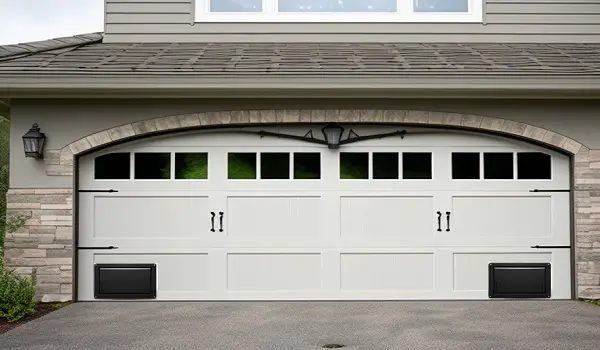
Weatherproof Garage Doors: Weatherstripping is a versatile solution for garage doors, providing protection against both air and water infiltration.
Typically constructed from soft and flexible materials like rubber or vinyl, weatherstripping is installed around the edges of the garage door.
These seals create a reliable barrier, preventing moisture from entering your garage during heavy rain or snowfall.
Weatherstripping also plays a role in maintaining a consistent temperature inside your garage, which is particularly useful if you use the space for more than just parking your vehicle.
Garage Doors with Bottom Seals
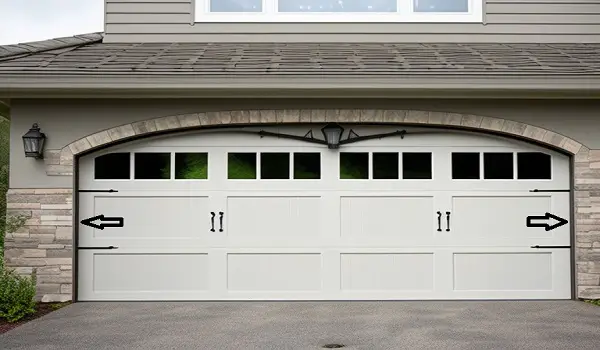
Flood-Resistant Garage Doors: Bottom seals are an essential component of any waterproof garage door. They are installed at the base of the door to prevent water from seeping in from underneath. Usually made from sturdy materials like metal or plastic, these seals effectively combat water infiltration.
Bottom seals are indispensable in regions prone to heavy rain or where the garage floor is at risk of flooding. They provide an additional layer of protection to safeguard your garage and its contents.
Garage Doors with Flood Vents
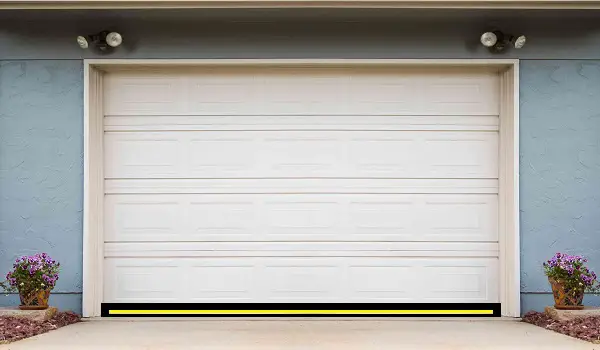
Garage Doors for Coastal Areas: Coastal areas often face unique challenges due to their proximity to water. Garage doors equipped with flood vents are specially designed for such regions.
These vents are typically installed at the bottom of the garage door and are activated by a float switch when water levels rise.
Flood vents allow water to escape from the garage during a flood, mitigating potential damage. This innovative solution is particularly crucial in coastal areas where the risk of flooding is higher.
Additional Features for Enhanced Waterproofing
Apart from the main types of waterproof garage doors mentioned above, several additional features can be incorporated to maximize water resistance:
- Galvanized Steel Construction: For areas with high humidity or precipitation, garage doors made from galvanized steel are an excellent choice. This material is highly resistant to rust and corrosion.
- Powder-Coated Finish: A powder-coated finish not only protects your garage door from the elements but also makes it easier to clean and maintain.
- Hurricane-Rated Construction: In regions prone to hurricanes and severe storms, consider investing in hurricane-rated garage doors. These doors are engineered to withstand high winds and heavy rain.
Choosing the Right Waterproof Garage Door
Selecting the appropriate waterproof garage door requires careful consideration of various factors:
- Climate and Location: Evaluate the climate and weather conditions in your area to determine the level of water resistance needed.
- Material: Choose a garage door material that offers both durability and weather resistance, such as steel, fiberglass, or vinyl.
- Insulation: Insulated garage doors provide energy efficiency and help maintain consistent temperatures within the garage.
- Sealing Mechanisms: Ensure that the garage door you choose comes equipped with effective sealing mechanisms, including weatherstrips, bottom seals, or watertight seals, depending on your specific needs.
How to Install a Waterproof Garage Door
Installing a waterproof garage door is a job best left to professionals. The installation process typically involves the following steps:
- Measure and Prepare: Accurate measurements are crucial to ensure a proper fit. The opening should be prepared by removing the old door and inspecting the frame for any necessary repairs.
- Assembly: Assemble the garage door according to the manufacturer’s instructions. This includes attaching hinges, rollers, and other hardware.
- Track Installation: Install the horizontal and vertical tracks securely, ensuring they are level and plumb.
- Spring System: Mount the spring system, which is essential for balanced and smooth door operation.
- Safety Measures: Install safety features such as sensors and an automatic reverse system to prevent accidents.
- Weatherproofing: Carefully seal all gaps and joints to make the garage door watertight.
- Testing: Test the door’s functionality to ensure it operates smoothly and securely.
How to Maintain a Waterproof Garage Door
Proper maintenance is essential to keep your waterproof garage door in optimal condition. Follow these maintenance tips:
- Regular Cleaning: Clean the door’s surface and tracks to remove dirt and debris that could affect its performance.
- Lubrication: Lubricate moving parts such as hinges, rollers, and springs to prevent rust and ensure smooth operation.
- Inspect Seals: Check the seals and weatherstrips for any signs of wear or damage, and replace them as needed.
- Paint or Finish: If your garage door has a wooden surface, periodically apply a fresh coat of paint or finish to protect it from moisture.
- Check for Damage: Regularly inspect the door for dents, cracks, or other damage that may compromise its waterproofing.
Tips for Waterproofing Your Garage Door
To ensure that your garage door remains watertight and capable of protecting your home, follow these essential tips:
- Regular Inspection: Inspect the weatherstripping and seals around the garage door to ensure they are in good condition and properly installed.
- Repair Any Damage: Promptly repair any cracks, holes, or damage to the garage door that may compromise its waterproofing capabilities.
- Install a Bottom Seal: If your garage door doesn’t have one, consider installing a bottom seal to prevent water from seeping in from below.
- Flood Vents: If you reside in an area prone to flooding, installing flood vents is a wise choice to prevent water buildup inside the garage.
Conclusion
In conclusion, waterproof garage doors are indispensable for protecting your home from water damage caused by heavy rain, flooding, or other environmental factors.
By selecting the right type of garage door and implementing proper maintenance measures, you can ensure that your garage remains dry and secure.
Don’t underestimate the importance of a waterproof garage door in safeguarding your valuable possessions and maintaining the integrity of your home.
Invest in a reliable waterproof garage door today to fortify your home against the elements and enjoy lasting peace of mind.

